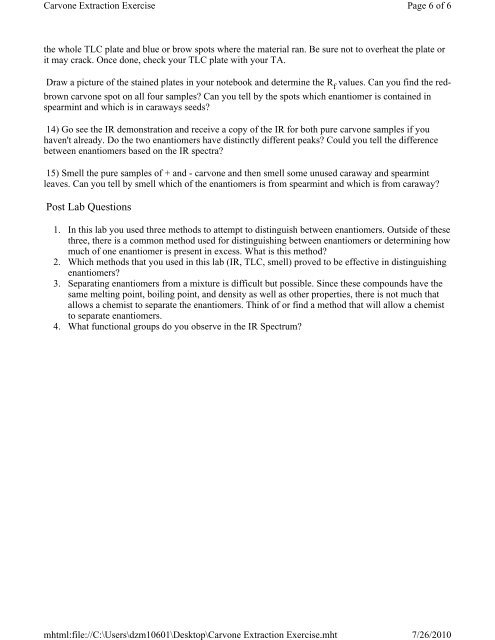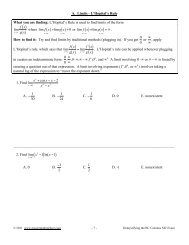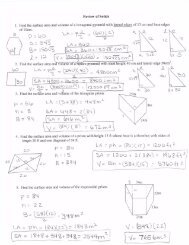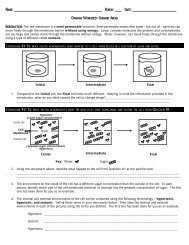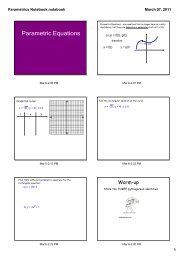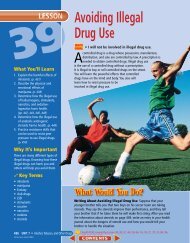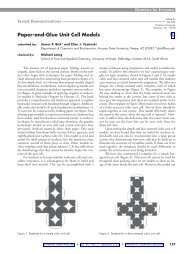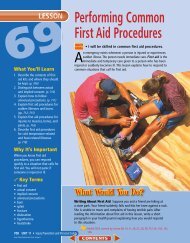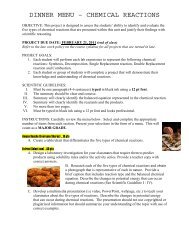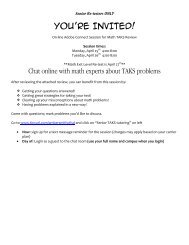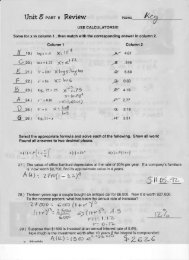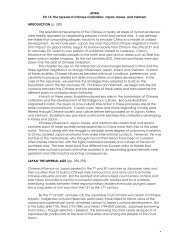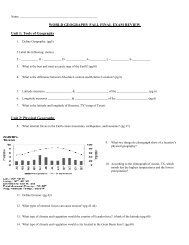Extraction of Carvone
Extraction of Carvone
Extraction of Carvone
Create successful ePaper yourself
Turn your PDF publications into a flip-book with our unique Google optimized e-Paper software.
<strong>Carvone</strong> <strong>Extraction</strong> Exercise<br />
the whole TLC plate and blue or brow spots where the material ran. Be sure not to overheat the plate or<br />
it may crack. Once done, check your TLC plate with your TA.<br />
Draw a picture <strong>of</strong> the stained plates in your notebook and determine the Rf values. Can you find the redbrown<br />
carvone spot on all four samples? Can you tell by the spots which enantiomer is contained in<br />
spearmint and which is in caraways seeds?<br />
14) Go see the IR demonstration and receive a copy <strong>of</strong> the IR for both pure carvone samples if you<br />
haven't already. Do the two enantiomers have distinctly different peaks? Could you tell the difference<br />
between enantiomers based on the IR spectra?<br />
15) Smell the pure samples <strong>of</strong> + and - carvone and then smell some unused caraway and spearmint<br />
leaves. Can you tell by smell which <strong>of</strong> the enantiomers is from spearmint and which is from caraway?<br />
Post Lab Questions<br />
Page 6 <strong>of</strong> 6<br />
1. In this lab you used three methods to attempt to distinguish between enantiomers. Outside <strong>of</strong> these<br />
three, there is a common method used for distinguishing between enantiomers or determining how<br />
much <strong>of</strong> one enantiomer is present in excess. What is this method?<br />
2. Which methods that you used in this lab (IR, TLC, smell) proved to be effective in distinguishing<br />
enantiomers?<br />
3. Separating enantiomers from a mixture is difficult but possible. Since these compounds have the<br />
same melting point, boiling point, and density as well as other properties, there is not much that<br />
allows a chemist to separate the enantiomers. Think <strong>of</strong> or find a method that will allow a chemist<br />
to separate enantiomers.<br />
4. What functional groups do you observe in the IR Spectrum?<br />
mhtml:file://C:\Users\dzm10601\Desktop\<strong>Carvone</strong> <strong>Extraction</strong> Exercise.mht<br />
7/26/2010


